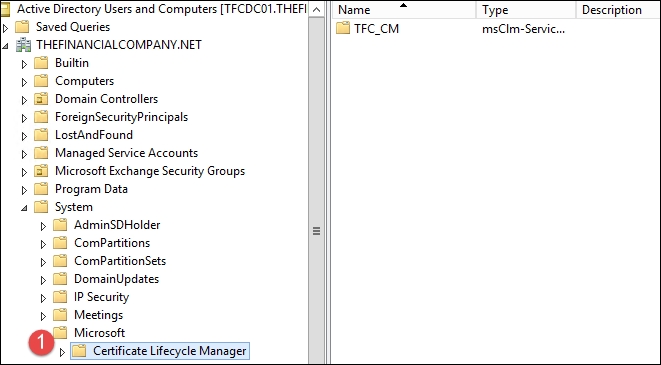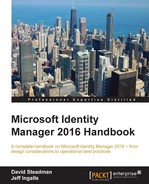Before we talk about certificate management, we need to understand the underlying components and architecture:

As depicted before, we have several components at play. We will start from the left to the right. From a high level, we have the Enterprise CA. The Enterprise CA can be multiple CAs in the environment. Communication from the CM application server to the CA is over the DCOM/RPC channel. End user communication can be with the CM web page or with a new REST API via a modern client to enable the requesting of smart cards and the management of these cards.
From the CM perspective, the two mandatory components are the CM server and the CA modules. Looking at the logical architecture, we have the CA, and underneath this, we have the modules. The policy and exit module, once installed, control the communication and behavior of the CA based on your CM's needs.
Moving down the stack, we have Active Directory integration. AD integration is the nuts and bolts of the operation. Integration into AD can be very complex in some environments, so understanding this area and how CM interacts with it is very important. We will cover the permission model later in this chapter, but it is worth mentioning that most of the configuration is done and stored in AD along with the database. CM uses its own SQL database, and the default name is FIMCertificateManagement. The CM application uses its own dedicated IIS application pool account to gain access to the CM database in order to record transactions on behalf of users. By default, the application pool account is granted the clmApp role during the installation of the database, as shown in the following screenshot:

In CM, we have a concept called the profile template. The profile template is stored in the configuration partition of AD, and the security permissions on this container and its contents determine what a user is authorized to see. As depicted in the following screenshot, CM stores the data in the Public Key Services (1) and the Profile Templates container. CM then reads all the stored templates and the permissions to determine what a user has the right to do (2):

Profile templates are at the core of the CM logic. The three components comprising profile templates are certificate templates, profile details, and management policies. The first area of the profile template is certificate templates. Certificate templates define the extensions and data point that can be included in the certificate being requested.
The next item is profile details, which determines the type of request (either a smart card or a software user-based certificate), where we will generate the certificates (either on the server or on the client side of the operations), and which certificate templates will be included in the request.
The final area of a profile template is known as management policies. Management policies are the workflow engine of the process and contain the manager, the subscriber functions, and any data collection items. The e-mail function is initiated here and commonly referred to as the One Time Password (OTP) activity. Note the word "One". A trigger will only happen once here; therefore, multiple alerts using e-mail would have to be engineered through alternate means, such as using the MIM service and expiration activities.
The permission model is a bit complex, but you'll soon see the flexibility it provides. Keep in mind that Service Connection Point (SCP) also has permissions applied to it to determine who can log in to the portal and what rights the user has within the portal.
SCP is created upon installation during the wizard configuration. You will want to be aware of the SCP location in case you run into configuration issues with administrators not being able to perform particular functions. The SCP location is in the System container, within Microsoft, and within Certificate Lifecycle Manager, as shown here:
Typical location CN=Certificate Lifecycle Manager,CN=Microsoft,CN=System,DC=THEFINANCIALCOMPANY,DC=NET

